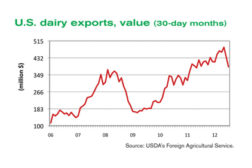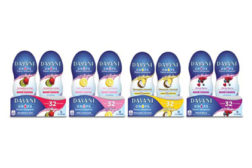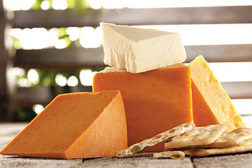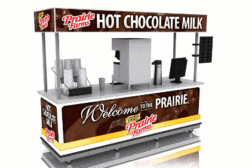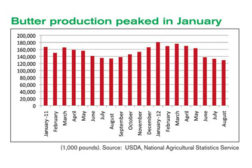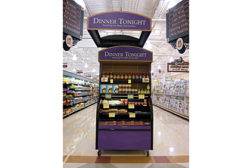Dairy Processor News
Tighter dairy supplies forecast for 2013
Drought in the United States, less favorable conditions in Europe, an uncertain El Niño and a decrease in New Zealand pay prices have increased supply challenges in the year ahead.
November 19, 2012
Beverage news: Plain old water gets a makeover
Flavor enhancers let consumers customize their beverages. Juice makers combine flavors (especially superfruits), and tea brands go with lower-calorie sweeteners.
November 19, 2012
Ingredients help consumers play with their food
One trend is interactive foods, as when users stir inclusions into yogurts or swirl colors into new combinations. Other trends (like clean labels) can have a domino effect on formulations. Eliminating sugar, for example, has a direct bearing on texture.
November 18, 2012
Hot milk dispenser
Prairie Farms taps on-demand hot chocolate milk dispensing
A dispenser for foodservice operations, like those in stadia, enables sales of hot chocolate.
November 18, 2012
Butter is ready for its close-up
Good old high-fat, high-calorie butter is starring on restaurant menus and at home. Foodies appreciate butter’s qualities in baking and in adding taste to home cooking.
November 16, 2012
To sell more dairy products, help retailers sell meal solutions
Meal solutions merchandising provides retailers an opportunity to differentiate themselves from the competition and more flexibility to leverage key consumer trends.
November 16, 2012
There is no fun for ice cream processors
Ice cream is marketed to consumers as a “fun” food, but the industry sees little to enjoy. Sales of ice cream, novelties, and sherbets have declined. Frozen yogurt, on the other hand, is the category star.
November 15, 2012
Stay ahead of the curve. Unlock a dose of cutting-edge insights.
Receive our premium content directly to your inbox.
SIGN-UP TODAYCopyright ©2024. All Rights Reserved BNP Media.
Design, CMS, Hosting & Web Development :: ePublishing

